EFFICIENCY OF METAL PROPIONATES ON GROWTH AND ECONOMICS IN COMMERCIAL BROILERS
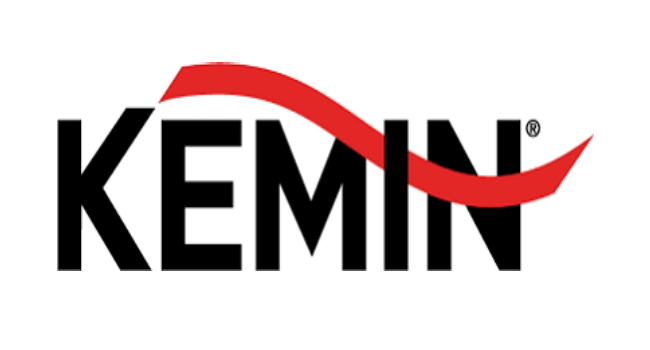
PARTHA PRATIM DAS, VENKET M SHELKE, SARAVANAN SANKARAN AND RAHUL MITTAL KEMIN INDUSTRIES SOUTH ASIA PVT. LTD.
INTRODUCTION
Incorporation of trace minerals in poultry diets play a vital role in metabolic processes in birds and are indispensable for optimum growth and development. Trace minerals mostly act as catalysts in many enzyme & hormone systems and hence affects growth, bone development, feathering, enzyme function, and feed intake, etc. Any deficiency of trace minerals is typically manifested as disturbances in multiple metabolic processes, resulting in lower production performance, loss of appetite,
reproductive disorders and reduced immune response. Trace minerals are mainly supplemented in poultry diets as inorganic combinations like salts of sulphates and oxides, but the availability of minerals from these inorganic sources are low and variable.
Trace mineral salts tend to dissociate at low pH in the upper gastrointestinal tract (GIT), leaving the minerals liable to several nutrient and ingredient antagonisms that impair absorption and thus reduce bioavailability. Mineral requirements for modern high yielding broiler strains are more and hence, in recent years, usage of organic trace minerals in poultry diets owing to higher bioavailability and lesser mineral interactions are focused.
Organic metal complexes are compounds containing a central metal atom (acceptor of electrons) that forms either a co- ordinate bond or covalent bond with ligands (i.e., proteins, amino acids, organic acid, carbohydrates, or lipids) through hetero atoms such as oxygen (O), nitrogen (N) or sulphur (S) with a free electron pair. Importance of organic mineral supplementation of zinc, chromium and selenium has been proven to improve the performance and anti-oxidant responses.
For an ideal organic trace mineral, the complex should dissociate at the site of absorption to make minerals readily available for absorption. There are various forms of organic trace minerals available based on ligands associated in the complex. These forms improve the performance of birds through enhanced absorption properties with lesser inter-mineral interactions in comparison with inorganic sources. Kemtrace® Supreme is a complete organic metal propionate mixture produced by a single process termed integrated organic mineral production system (IOMPS) (containing metal propionates) designed for poultry needs with propionate bonding.
The dissociation of metal propionates occurs at a pKa value of 4.8 (distal end of gizzard), thereby facilitating the minerals for better absorption in the small intestine. It contains eight minerals – zinc, manganese, copper, cobalt, chromium, iron, iodine and selenium. A comparative trial was conducted to assess the growth and economical advantage of Kemtrace® Supreme over commercially available proteinate based organic trace mineral product in commercial broilers.
TRIAL OBJECTIVE & DESIGN
The objective of this study was to evaluate and compare the dietary incorporation of metal propionates and proteinate based trace minerals in commercial broilers on growth performance, carcass characters and economic benefits. The 35-days study was conducted in a well-designed trial farm facility in Northern part of India under commercial farming conditions.
A total of 240 (Vencobb-400) day-old chicks were randomly divided into 2 dietary treatments with 6 replicates, each replicate containing 20 birds. All the treatments were fed with corn-soya based pellet diets conforming to breed specifications with an exception on the supplementation of trace mineral preparation and dosage. The details of experimental groups and dosage levels are given in Table-1 respectively.
Table-1: Details of experimental groups and dosage levels
PARAMETERS MEASURED
- Body weight (BW)
- Feed conversion ratio (FCR)
- European efficiency factor (EEF)
- Carcass Characteristics
- Economic Benefits
- Return on investment (ROI)
Fig-1: Average body weight of treatment groups at the end of trial.
Fig-2: Feed conversion ratio of treatment groups at the end of trial.
Fig-3: Calculated EEF of treatment groups at the end of trial.
4. CARCASS CHARACTERISTICS Table-2: Carcass Characteristics of the treatment groups
5. ECONOMICS BENEFITS & ROI Table-3: ROI & Economic Calculations
There was no significant (P≥0.05) difference in body weight and FCR between the groups at the end of trial. But, treatment with Kemtrace ® Supreme at 500g/MT showed numerically higher body weight with 2-points better FCR over metal proteinate at 500g/MT (Fig1 & Fig-2) dosage.
Highest EEF with an ROI of 6:1 was recorded in Kemtrace ® Supreme than metal proteinate (Fig3). Results for carcass characteristics for total dressing percentage and abdominal fat pad was determined at end of trial (Table-2). Highest dressing percentage was noticed in Kemtrace ® Supreme with lowest abdominal fat pad deposition over metal proteinates (Table-2).
CONCLUSION
Supplementation of Kemtrace® Supreme outperformed in terms of body weight, FCR, EEF, abdominal fat % and ROI when compared to metal proteinates. Based on the present study, it can be postulated that metal propionates (Kemtrace® Supreme) can be considered as a useful product than the trace minerals conjugated with other organic forms, in terms of overall performance parameters and ROI in commercial broilers.


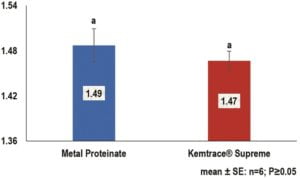
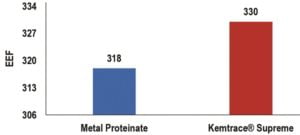


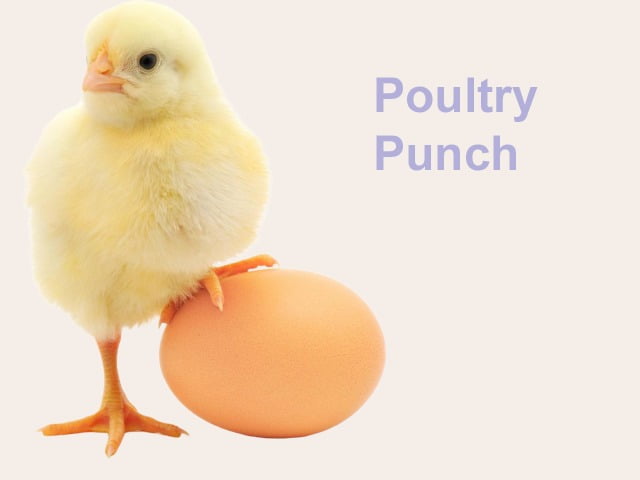
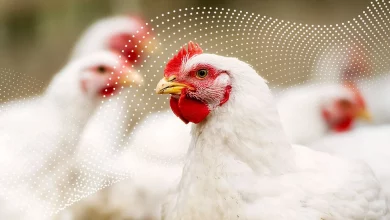

Excellent post. Keep posting such kind of info on your site.
Im really impressed by your blog.
Hey there, You’ve done an excellent job. I’ll certainly digg
it and personally recommend to my friends. I am sure they will be benefited from this site.